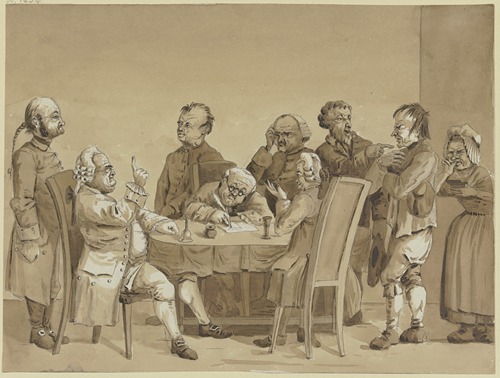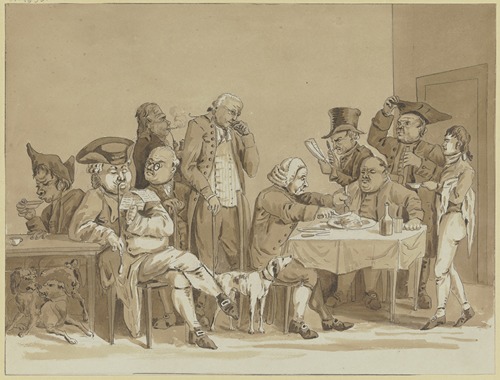Friedrich Rottmann
Christian Friedrich Joseph Rottmann was a draughtsman, engraver and etcher.
Friedrich Rottmann was born in 1768 as the first child of Franz J. K. Rottmann, the adjunct and later orphanage keeper (Rentamtmann) in Handschuhsheim. Rottmann was originally intended to succeed his father as head of the state orphanage and administrator of the properties. When the areas of the Palatinate on the right bank of the Rhine fell to Baden as a result of the Reichsdeputationshauptschluss, the 35-year-old Rottmann had to look for another source of income due to the reorganization of church property. In line with his inclinations, he tried to establish himself as an artist.
Rottmann studied at the University of Heidelberg. At the same time, he trained as an artist at the Mannheim Academy. In 1794, he took up a position as an administrative assistant at his father's rent office in Handschuhsheim. On June 17, 1794, he married Susanna Werner.
In 1803, he went to Munich for training, although there is no evidence that he attended the academy. However, it is assumed that he visited the studio of Wilhelm von Kobell, whom he already knew from his time in Mannheim. It is likely that Rottmann at least received inspiration and some technical guidance here. It is also possible that the Karlsruhe court painter Carl Kuntz had a certain influence on Rottmann's artistic development.
Back home, Rottmann was employed as a drawing teacher at the Catholic grammar school in Heidelberg in 1805 and in 1807 he was appointed university drawing master. In 1811 he became a teacher of landscape drawing at the university.
He joined the Heidelberg Masonic Lodge "Carl zur guten Hoffnung" in 1806.
His most important pupils included his own son Carl as well as Carl Philipp Fohr and Ernst Fries, who received their first drawing lessons from him and whose talent and drawing technique he trained with works based on models (especially by Carl Kuntz) and from nature. Rottmann's artistic work in Heidelberg more or less coincided with the Napoleonic era. His first surviving works were created in the 1790s and his last large-format sheet dates from 1815. His depiction of Heidelberg from the Neuenheimer Ufer from around 1800, in which the Old Bridge can be seen in the foreground against the backdrop of a rising, radiant sun, is well known.

